Venerated in Orthodox Church Feast 10 April | Name Gregory of | |
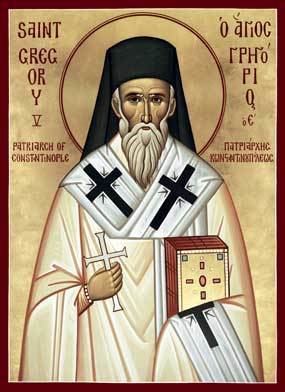 | ||
Controversy elected in 1797 but deported to Mount Athos, Greece in 1798, reelected 1806 and exiled to Prince Islands then Mount Athos in 1810, reelected 1818 Similar People Constantine XI Palaiologos, Mark of Ephesus, Aelia Flaccilla, Romanos the Melodist, Pope Agapetus I | ||
Gregory V (Γρηγόριος Ε΄, born Georgios Angelopoulos) was Ecumenical Patriarch of Constantinople from 1797 to 1798, from 1806 to 1808 and from 1818 to 1821. He was responsible for much restoration work to the Patriarchal Cathedral of St George, which had been badly damaged by fire in 1738. At the onset of the Greek War of Independence, as Ethnarch of the Orthodox Millet Gregory V was blamed by Ottoman Sultan Mahmud II for his inability to suppress the Greek uprising, even though he had actually condemned the Greek revolutionary activities so as to protect the Greeks of Constantinople from reprisals by the Ottoman Turks. The reprisals did come during Holy Week in April 1821, after the Greek rebels scored several successes against the Ottoman forces in the Peloponnese.
Contents
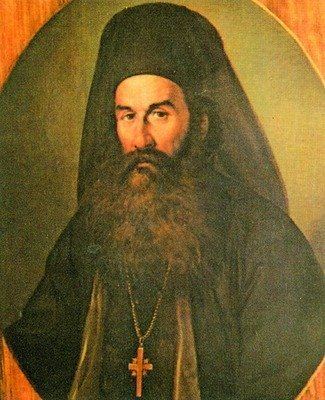
He was taken out of the Patriarchal Cathedral on 22 April 1821 (10 April Old Style), Easter Sunday, directly after celebrating the solemn Easter Liturgy, and hanged (in full Patriarchal vestments) for two days from the main gate of the Patriarchate compound by order of the Sultan; this was followed by a massacre of the Greek population of Constantinople.
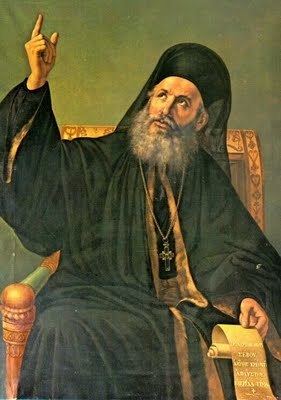
In his memory, the Saint Peter Gate, once the main gate of the Patriarchate compound, was welded shut in 1821 and has remained shut ever since.
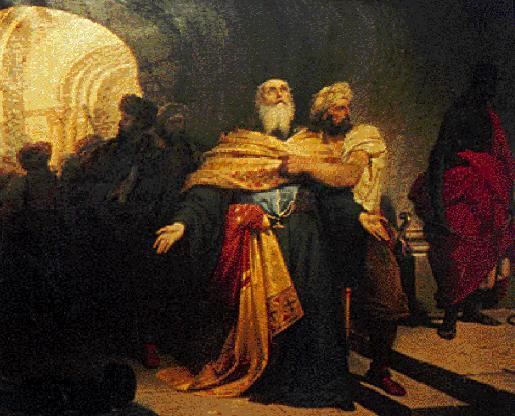
Death
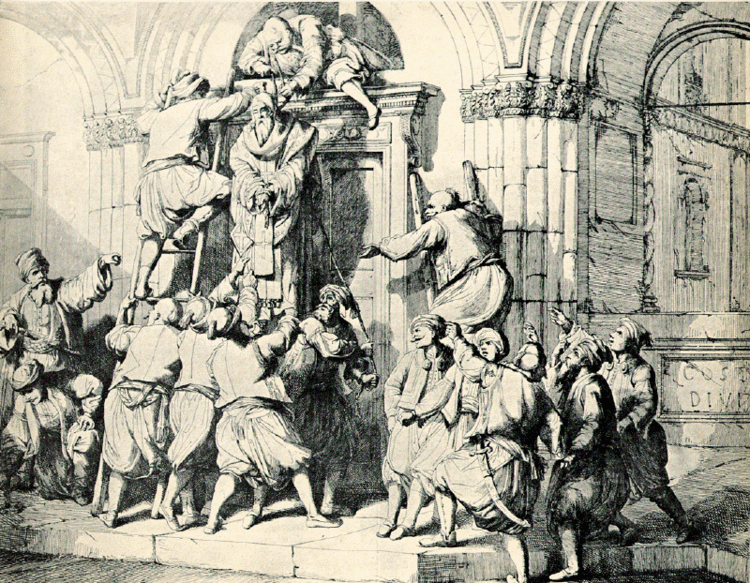
According to several accounts, after Gregory's death his body, along with those of other executed prelates, was turned over to the city's Jews, who dragged it through the streets and threw it into the sea. The accounts differ on whether the Jews who did this were forced or volunteered, but the tale spread widely, and led to several bloody reprisal attacks in southern Greece by the Greek rebels, who regarded the Jews as collaborators of the Turks. This in turn led to the Jews joining the Turks in attacks on Christians in some locations in northern Greece, which fuelled a new wave of anti-Jewish attacks in the south. During the night, the patriarch's corpse was recovered by Greek sailors, who brought it to Odessa. After the funeral, some Greek sailors attacked Jewish shops which had remained open during the ceremony. The Patriarch's body was eventually interred in the Metropolitan Cathedral of Athens.
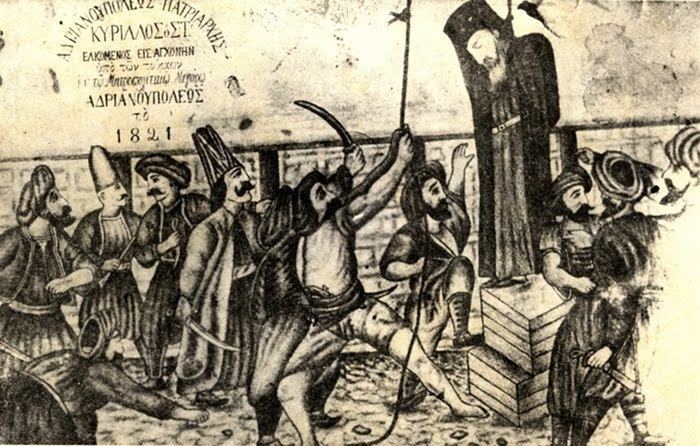
He is commemorated by the Greek Orthodox Church as an Ethnomartyr (Greek: Εθνομάρτυρας).
Influence
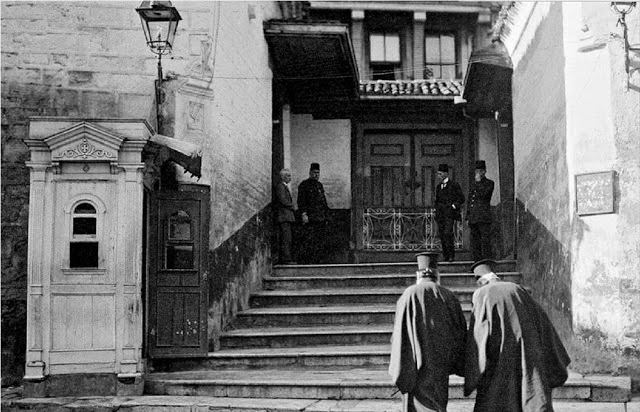
The brutal execution of Gregory V, especially on the day of Easter Sunday, shocked and infuriated the Greeks, and Orthodox Russia. It also caused protests in the rest of Europe and reinforced the movement of Philhellenism. There are references that during the Greek War of Independence, many revolutionaries engraved on their swords the name of Gregory, seeking revenge.
Dionysios Solomos, in his Hymn to Liberty, which became later the Greek national anthem, also mentions the hanging of the Patriarch in some stanzas.
